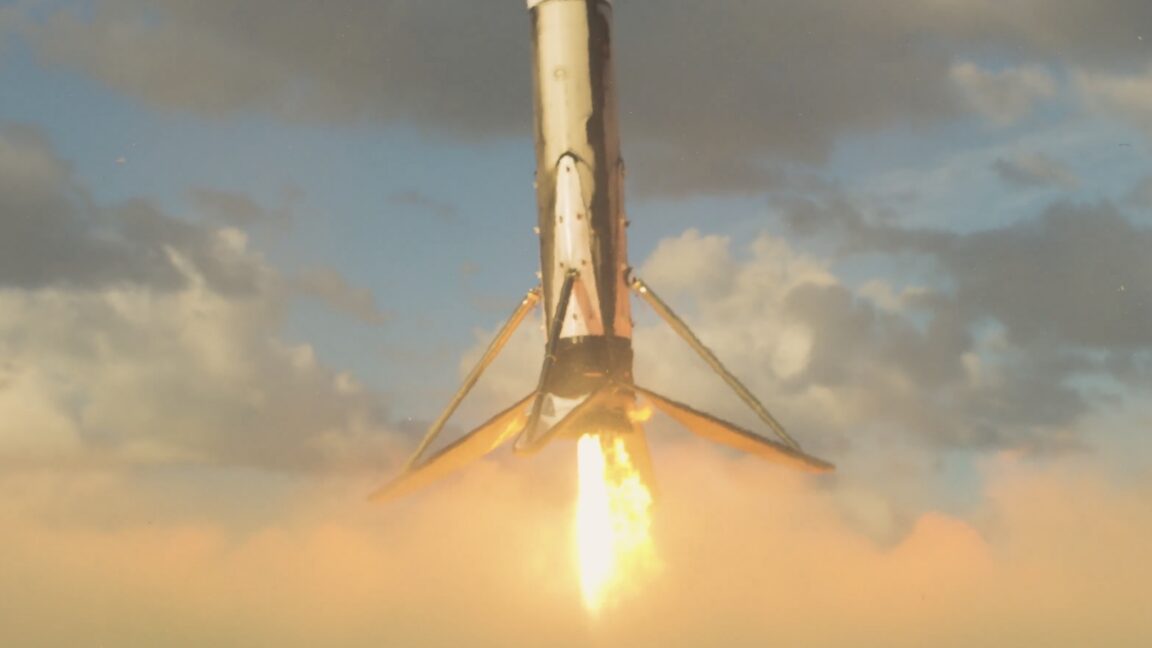
SpaceX scored its 500th landing of a Falcon 9 first stage booster on an otherwise routine flight earlier this month, sending 28 Starlink communications satellites into orbit. Barring any unforeseen problems, SpaceX will mark the 500th re-flight of a Falcon first stage later this year.
A handful of other US companies, including Blue Origin, Rocket Lab, Relativity Space, and Stoke Space, are on the way to replicating or building on SpaceX’s achievements in recycling rocket parts. These launch providers are racing a medley of Chinese rocket builders to become the second company to land and reuse a first stage booster.
But it will be many years—perhaps a decade or longer—until anyone else matches the kinds of numbers SpaceX is racking up in the realm of reusable rockets. SpaceX’s dominance in this field is one of the most important advantages the United States has over China as competition between the two nations extends into space, US Space Force officials said Monday.
“It’s concerning how fast they’re going,” said Brig. Gen. Brian Sidari, the Space Force’s deputy chief of space operations for intelligence. “I’m concerned about when the Chinese figure out how to do reusable lift that allows them to put more capability on orbit at a quicker cadence than currently exists.”
Taking advantage
China has used 14 different types of rockets on its 56 orbital-class missions this year, and none have flown more than 11 times. Eight US rocket types have cumulatively flown 142 times, with 120 of those using SpaceX’s workhorse Falcon 9. Without a reusable rocket, China must maintain more rocket companies to sustain a launch rate of just one-third to one-half that of the United States.
This contrasts with the situation just four years ago, when China outpaced the United States in orbital rocket launches. The growth in US launches has been a direct result of SpaceX’s improvements to launch at a higher rate, an achievement primarily driven by the recovery and reuse of Falcon 9 boosters and payload fairings. Last month, SpaceX flew one of its Falcon 9 boosters for the 30th time and set a record at nine days for the shortest turnaround between flights of the same booster in March.
“They’ve put more satellites on orbit,” Sidari said, referring to China. “They still do not compare to the US, but it is concerning once they figure out that reusable lift. The other one is the megaconstellations. They’ve seen how the megaconstellations provide capability to the US joint force and the West, and they’re mimicking it. So, that does concern me, how fast they’re going, but we’ll see. It’s easier said than done. They do have to figure it out, and they do have some challenges that we haven’t dealt with.”
One of those challenges is China’s continued reliance on expendable rockets. This has made it more important for China to make “game-changing” advancements in other areas, according to Chief Master Sgt. Ron Lerch, the Space Force’s senior enlisted advisor for intelligence.
Lerch pointed to the recent refueling of a Chinese satellite in geosynchronous orbit, more than 22,000 miles (nearly 36,000 kilometers) over the equator. China’s Shijian-21 and Shijian-25 satellites, known as SJ-21 and SJ-25 for short, came together on July 2 and have remained together ever since, according to open source orbital tracking data.
No one has refueled a spacecraft so far from Earth before. SJ-25 appears to be the refueler for SJ-21, a Chinese craft capable of latching onto other satellites and towing them to different orbits. Chinese officials say SJ-21 is testing “space debris mitigation” techniques, but US officials have raised concerns that China is testing a counter-space weapon that could sidle up to an American or allied satellite and take control of it.
Lerch said satellite refueling is more important to China than it is to the United States. With refueling, China can achieve a different kind of reuse in space while the government waits for reusable rockets to enter service.
“They have to have on-orbit refueling as a capability because they don’t access space as frequently as we do,” Lerch said Monday at the Air Force Association’s Air, Space, and Cyber Conference. “When it comes to replenishing our toolkit, getting more capability (on orbit) and reconstitution, having reusable launch is what affords us that ability, and the Chinese don’t have that. So, pursuing things like refueling on orbit, it is game-changing for them.”
SpaceX’s rapid-fire cadence is pivotal for a number of US national security programs. The Pentagon uses SpaceX’s Starlink satellites, which take up most of the Falcon 9 launch capacity, for commercial-grade global connectivity. SpaceX’s Starshield satellite platform, derived from the Starlink design, has launched in stacks of up to 22 spacecraft on a single Falcon 9 to deploy a constellation of hundreds of all-seeing spy satellites for the National Reconnaissance Office. The most recent batch of these Starshield satellites launched Monday.
Cheaper, readily available launch services will also be critical to the Pentagon’s aspirations to construct a missile shield to defend against attacks on the US homeland. Sensors and interceptors for the military’s planned Golden Dome missile defense system will be scattered throughout low-Earth orbit.
SpaceX’s inventory of Falcon 9 rockets has enabled the Space Force to move closer to realizing on-demand launch services. On two occasions within the last year, the Space Force asked SpaceX to launch a GPS navigation satellite with just a few months of lead time to prepare for the mission. With a fleet of reusable rockets at the ready, SpaceX delivered.
Meanwhile, China recently started deploying its own satellite megaconstellations. Chinese officials claim these new satellite networks will be used for Internet connectivity. That may be so, but Pentagon officials worry China can use them for other purposes, just as the Space Force is doing with Starlink, Starshield, and other programs.
Copycats in space
Lerch mentioned two other recent Chinese actions in space that have his attention. One is the launch of five Tongxin Jishu Shiyan (TJS) satellites, or what China calls communication technology test satellites, into geosynchronous orbit since January, something Lerch called “highly unusual.” Chinese authorities released (rather interesting) patches for four of these TJS satellites, suggesting they are part of a family of spacecraft.
“More importantly, these spacecraft sitting at GEO (geosynchronous orbit) are not supposed to be sliding all around the GEO belt,” Lerch said. “But the history of these experimental spacecraft have shown that that’s exactly what they do, which is very uncharacteristic for a system that’s supposed to be providing satellite communications.”
US officials believe China uses at least some of the TJS satellites for missile warning or spy missions. TJS satellites filling the role of a reconnaissance mission might have enormous umbrella-like reflectors to try to pick up communication signals transmitted by foreign forces, such as those of the United States.
China also launched a spy satellite called Yaogan 45 into a peculiar orbit earlier this month. (Yaogan is a cover name for China’s military spy satellites.) Yaogan 45 is a remote sensing platform, Lerch said, but it’s flying much higher than a typical Earth-imaging satellite. Instead of orbiting a few hundred miles above the Earth, Yaogan 45 circles at an altitude of some 4,660 miles (7,500 kilometers).
“That, alone, is very interesting,” Lerch said.
But US intelligence officials believe there’s more to the story. China launched the country’s first two communications satellites into a so-called medium-Earth orbit, or MEO, last year. These satellites are the first in a network called Smart Skynet.
“It looks like a year ago they started to put the infrastructure at MEO to be able to move around data, and then a year later, the Chinese are now putting remote sensing capability at MEO as well,” Lerch said. “That’s interesting, and that starts to paint a picture that they value remote sensing to the point where they want resiliency in layers of it.”
China launched a satellite named Yaogan 41 into geosynchronous orbit in 2023 with a sharp-eyed telescope with enough sensitivity to track car-sized objects on the ground and at sea. From its perch in geosynchronous orbit, Yaogan 41 will provide China’s military with a continuous view of the Indo-Pacific region. A single satellite in low-Earth orbit offers only fleeting views.
Some of this may sound familiar if you follow what the US military and the National Reconnaissance Office are doing with their satellites.
“Our military power has served as a bit of an open book, and adversaries have watched and observed us for years,” said Lt. Gen. Max Pearson, the Air Force’s deputy chief of staff for intelligence.
China’s military has “observed how we fight, the techniques we use, the weapons systems we have,” Pearson said. “When you combine that with intellectual property theft that has fueled a lot of their modernization, they have deliberately developed and modernized to counter our American way of war.”



